On April 6, 2023, the Prime Minister approved the Digital Transformation Strategy for Journalism to 2025, with a vision to 2030.
Digital transformation of journalism will become an inevitable trend in all press agencies. The essence of digital transformation journalism is the application of increasingly modern technology to press activities, making the digital press ecosystem enriched with new and superior features, helping to improve the quality and effectiveness of communication.
The world enters phase 3 of the digital transformation of journalism.
Up to this point, the world press has gone through 3 stages of digital transformation (some people call it the 3rd cycle of digital transformation, or the 3rd round of digital transformation).
 |
Reporters working at the Vietnam International Defense Exhibition 2022. Photo: TUAN HUY |
The first stage was the birth of digital journalism - also known as internet journalism, electronic newspaper, online newspaper - in 1992, with the appearance of the Chicago Tribune (USA). In Vietnam, the Que Huong Online Magazine of the Committee for Overseas Vietnamese (Ministry of Foreign Affairs ) is considered the first digital newspaper. To date, in our country there are 29 independent online newspapers; most print, radio and television agencies have online newspapers. Digital journalism was born thanks to data digitization technology and the internet environment, with strengths that traditional forms of journalism do not have, such as: Instant updating, hyperlinking, hyperinteraction, hyperarchiving, multimedia (multilingual)...
In 2016, the Industrial Revolution 4.0 appeared. Outstanding achievements such as Big Data, Cloud Computing, Internet of Things (IoT), Artificial Intelligence (AI) of the Industrial Revolution 4.0 were applied to the field of journalism, bringing journalism into the second phase - the digital transformation phase.
Digital transformation of journalism is not simply about digitizing data and upgrading the level of application of information technology in journalism activities, but is a comprehensive change in journalism activities: from the editorial office model, organizational structure, production process, content development, working methods, public marketing, data management, editorial office culture, to leadership and management of journalism.
One of the results of digital transformation of journalism is the widespread emergence of new media models: "Converged newsroom", "Multimedia journalism", "Multiplatform journalism", "Mobile journalism", "Social media journalism"... Many printed newspapers, radio and television programs have also moved to the internet platform. Along with that, modern technology allows journalists to create many more attractive forms of media: Megastory, infographics, long form, data journalism, media, lens, podcast, video... Digital transformation of journalism also helps press agency leaders change the way they manage the internal management of the newsroom, manage the publishing process, manage data, manage public interaction... based on digital software.
In May 2018, Google demonstrated a virtual assistant that could talk like a real person, even adapting flexibly to unexpected situations in a conversation. Immediately, AI began to be widely used in newsrooms around the world, from major press agencies in the UK, France, the US, Germany, Italy, Japan, China, South Korea to developing countries such as Brazil, Argentina, Vietnam... 2018 is considered a milestone that opened phase 3 of the digital transformation of journalism. In Vietnam, on January 5, 2021, Thanh Nien Newspaper became a pioneer in applying AI. To date, many Vietnamese newspapers have also exploited AI, but at a rudimentary level.
Continuing the AI journalism trend, on November 30, 2022, ChatGPT technology (invented by the American artificial intelligence company OpenAI) was born, opening up opportunities as well as greater challenges for the press. Mathias Doepfner, head of the Axel Springer media group (Germany), declared that ChatGPT could create an information revolution and said: "Only the agencies that create the best original content can survive."
Thus, digital journalism is still the “core” of digital transformation journalism. The essence of digital transformation journalism is the application of increasingly modern technology to journalism activities, making the digital journalism ecosystem enriched with new, superior features, helping to improve the quality and effectiveness of communication.
The leading role of the head of the press agency
For digital transformation to be successful, the key is human resources. Human resources must know how to apply digital technology into practice, act synchronously according to systematic digital thinking, especially the head of the press agency.
Thus, digital transformation of the press depends on human resources in all different areas of the press agency: Senior leaders and managers; middle leaders and managers; grassroots managers; staff and reporters. All are like important links to operate the digital transformation machine. If one link fails, the machine will operate sluggishly, inefficiently, or even not be able to operate.
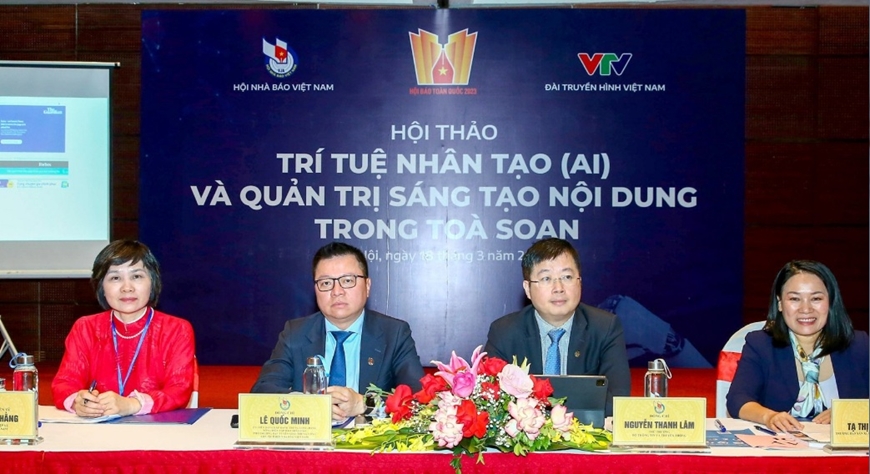 |
Workshop “Artificial Intelligence (AI) and Content Creation Management in Newsrooms”, organized by the Vietnam Journalists Association in collaboration with Vietnam Television on March 18, 2023, in Hanoi. Photo: HA VAN |
In phase 3 of digital journalism transformation, what is needed from the head of a press agency is the mindset of "taking a shortcut" to technology, taking drastic actions with specific goals to be achieved, such as: Bringing content to digital platforms (for agencies that do not have an online newspaper); reorganizing appropriate personnel areas to operate a converged newsroom model (for multi-format press agencies); developing social media journalism; producing content according to digital journalism trends (data journalism, visual journalism, creative journalism, etc.); deploying AI, Chatbot, ChatGPT applications; sending leaders, officers, reporters, editors for training, fostering knowledge and skills in digital journalism transformation, etc.
To do many things for the digital transformation of their newspaper, first of all, the head of the press agency must be educated and trained by digital transformation experts, from technology lecturers, from training institutions. The knowledge area for press agency leaders should include: Knowledge of digital transformation journalism (technology, techniques, forecasting); knowledge of digital transformation journalism management (building a digital transformation journalism strategy; content management; digital transformation editorial office management; digital transformation journalism human resource management; digital transformation journalism economic management; digital transformation editorial office culture management; digital transformation journalism security management; the art of leadership and management of digital transformation journalism; exploiting and managing digital press public data and exploiting revenue from digital public).
Building a team of journalists with “comprehensive digital transformation”
A characteristic of digital transformation is innovation based on technology. Therefore, the press staff must be knowledgeable about technology, techniques and truly creative.
Digital transformation challenges journalists to do many different things. Technology is just a lever, but how to create a mark, so that each newspaper has its own identity, not blending into the "choir" of mainstream information is the essence. Therefore, to work in digital transformation journalism, journalists must "completely transform digitally", which means achieving many qualities and skills: Skills in using technology to make digital journalism; skills in exploiting and verifying digital information; skills in creating and organizing multimedia journalism products; skills in interdisciplinary cooperation; skills in exploiting and processing digital data resources; skills in securing digital information; skills in working with IA, ChatGPT; having a culture and ethics suitable for working in a digital environment.
It is very difficult to learn and explore these qualities and skills on your own, especially when journalists' income is very limited, so it is difficult to unleash their full potential and enthusiasm. Therefore, it requires the State, the governing body, and the press agencies to have the responsibility to support.
On April 6, 2023, the Prime Minister approved the Strategy for Digital Transformation of Journalism to 2025, with a vision to 2030. Accordingly, the Ministry of Information and Communications will support training and fostering knowledge and skills for journalists; support the development of a national digital platform for journalism. However, the State's digital transformation training and human resource development programs are urgent solutions. The future of digital transformation journalism is long, will progress through many cycles, and will certainly become an inevitable trend in all press agencies, requiring Vietnam to build a resource for comprehensive, substantive, and systematic digital transformation journalism. That responsibility belongs to journalism training institutions.
Digital transformation in journalism training is forcing training institutions to rethink their entire way of operating as well as the training products provided to the market and society in general. To meet the requirements of the new era in the digital context, journalism and media training institutions will have to transform fundamentally and comprehensively. Journalism training programs need to balance basic knowledge, theory and practical skills. Before practicing their profession, professional reporters and journalists must receive basic training, gradually receive advanced training, supplement and update new knowledge and skills. If the training program is academic, learners will lack practical knowledge and spend more time integrating skills after graduation. If the training program only trains skills, learners will lack basic knowledge, social knowledge and especially methodologies, methods of analysis and problem solving, leading to writing empty articles without depth and unique perspectives. Therefore, many journalism training institutions are actively practicing the model of "bringing the newsroom to the classroom", linking training with vivid practice.
It can be affirmed that digital transformation is leading the press to exploit huge media potentials based on advanced technology platforms and endless human creativity. If there is community support and close connection of responsibilities between the State - governing agencies - press agencies - training institutions, the problem of "comprehensive digital transformation human resources" for the press will be solved, bringing bright prospects for the Vietnamese press.
| In early June 2023, the Ministry of Information and Communications established the Press Digital Transformation Support Center (under the Press Department). The Center is responsible for supporting press agencies to effectively implement the digital transformation goals in the Press Digital Transformation Strategy to 2025, with a vision to 2030. The Center is the focal point for supporting the provision of information, documents, and guidance for press agencies to measure and evaluate the maturity level of press digital transformation; support training and coaching to raise awareness, knowledge, and skills; mobilize resources from businesses to accompany the goals of the press digital transformation support program. |
Associate Professor, Dr. TRUONG THI KIEN (Academy of Journalism and Communication)
Source






![[Photo] Impressive 13 portraits of General Secretaries of the Communist Party of Vietnam through the ages](https://vphoto.vietnam.vn/thumb/1200x675/vietnam/resource/IMAGE/2025/9/11/9d1395186a0b42a1bc3a50f33ca146df)









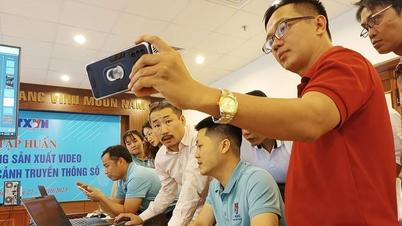













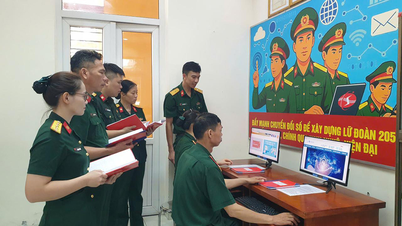




![[Photo] Prime Minister Pham Minh Chinh chairs the 20th meeting of the Steering Committee for important national projects and works](https://vphoto.vietnam.vn/thumb/1200x675/vietnam/resource/IMAGE/2025/9/10/e82d71fd36eb4bcd8529c8828d64f17c)

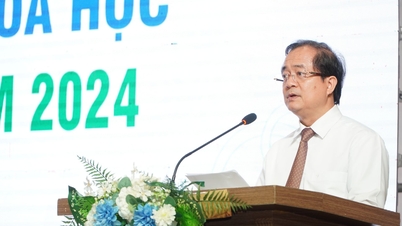


















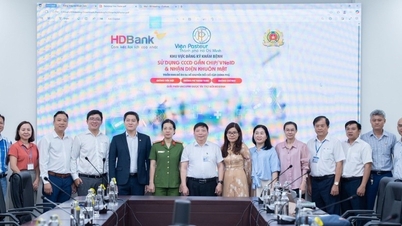












































Comment (0)